Ingenuity (helicopter)
Ingenuity, nicknamed Ginny, is a small robotic helicopter operating on Mars as part of NASA's Mars 2020 mission along with the Perseverance rover, which landed on February 18, 2021. Two months later, on April 19, Ingenuity successfully completed the first powered controlled extraterrestrial flight by an aircraft—taking off vertically, hovering, and landing, for a flight duration of 39.1 seconds.[4][5][6] As of April 29, 2022, it has made 28 successful flights.[7][8] Ingenuity's 25th successful flight, which occurred on April 8, 2022, saw the helicopter set new records for highest speed and distance traveled during a single flight.[9]
| Ingenuity | |
|---|---|
| Part of Mars 2020 | |
 Ingenuity on Mars at Wright Brothers Field, April 7, 2021 (sol 46), photographed by Perseverance rover | |
| Type | Extraterrestrial autonomous UAV helicopter |
| Serial no. | IGY (civil registration) |
| Owner | NASA |
| Manufacturer | Jet Propulsion Laboratory |
| Specifications | |
| Dimensions | 121 cm × 49 cm (48 in × 19 in) |
| Dry mass | 1.8 kilograms (4.0 lb)[1] |
| Power | Solar-charged Li ion battery; typical engine input power: 350 watt[2] |
| Instruments | |
| |
| History | |
| Deployed |
|
| Location | Jezero crater, Mars[3] |
| First flight |
|
| Last flight |
|
| Flights | 28 |
| Flight time | 54 minutes, 16 seconds |
| Travelled | 6.98 km (4.34 mi) on Mars as of 29 April 2022 |
Ingenuity was designed and built by NASA's Jet Propulsion Laboratory (JPL), with contributions by NASA's Ames Research Center and Langley Research Center;[10] AeroVironment, Inc.; SolAero; and Lockheed Martin Space.[11] Its rotors measure 122 cm (4 ft),[1][12][13] and its entire body is 49 cm (19 in) tall.[1] Its fuselage measures 13.6 cm × 19.5 cm × 16.3 cm (5.4 in × 7.7 in × 6.4 in), with four landing legs of 38.4 cm (15.1 in) each.[1] It is operated by solar-charged batteries that power dual counter-rotating rotors mounted coaxial one above the other. During its 30-day technology demonstration, It was intended to fly up to five times at altitudes ranging from 3–5 m (10–16 ft) for up to 90 seconds each.[1][14] The expected lateral range was exceeded in the third flight, and the flight duration was exceeded in the fourth. The flights proved its ability to fly in the extremely thin atmosphere of Mars, over a hundred million miles from Earth, without direct human control. Because radio signals take between 5–20 minutes to travel between Earth and Mars—depending on planetary positions[15]—Ingenuity must operate autonomously, performing maneuvers planned, scripted and transmitted to it by JPL.
After the brief demonstration phase, JPL began more flights as operational demonstrations, to show how aerial scouting could benefit exploration of Mars and other worlds.[16][17] In its operational role, Ingenuity is observing areas of interest for possible examination by the Perseverance rover.[18][19][1][20] The helicopter's performance and resilience greatly exceeded expectations, enabling it to make flights for the remainder of 2021 and into 2022. In March 2022, NASA announced that it would continue to fly Ingenuity through at least September.[21]
Ingenuity travelled to Mars attached to the underside of Perseverance, which touched down at the Octavia E. Butler Landing site in the 28 mi (45 km) wide Jezero crater on February 18, 2021.[22][23][24] The helicopter was deployed to the surface on April 3, 2021,[25][26] and Perseverance drove approximately 100 m (330 ft) away to allow the drone a safe "buffer zone" in which to make its first flight.[27][28] Success was confirmed three hours later in a livestreaming TV feed from JPL Mission Control.[29][30][31] On its fourth flight, on April 30, 2021, Ingenuity became the first interplanetary spacecraft whose sound was recorded by another interplanetary spacecraft, Perseverance.[32]
Ingenuity carries a piece of fabric from the wing of the 1903 Wright Flyer, the Wright Brothers' airplane used in the first controlled powered heavier-than-air flight on Earth. Ingenuity's initial take-off and landing area is named Wright Brothers Field as a tribute.[33] Before Ingenuity, the first flight of any kind on a planet beyond Earth was an unpowered balloon flight on Venus by the Soviet Vega 1 spacecraft in 1985.[34]
Design

| Rotor speed | 2400–2700 rpm[1][13][35] |
| Blade tip speed | <0.7 Mach[36] |
| Originally planned operational time | 1 to 5 flights within 30 sols[1][2] |
| Flight time | Up to 167 seconds per flight[37] |
| Maximum range, flight | 704 m (2,310 ft) |
| Maximum range, radio | 1,000 m (3,300 ft)[20] |
| Maximum altitude | 12 m (39 ft) |
| Maximum possible speed | |
| Battery capacity | 35–40 Wh (130–140 kJ)[38] |
The lower gravity of Mars (about a third of Earth's) only partially offsets the thinness of the 95% carbon dioxide atmosphere of Mars,[39] making it much harder for an aircraft to generate adequate lift. The planet's atmospheric density is about 1⁄100 that of Earth's at sea level, or about the same as 87,000 ft (27,000 m), an altitude never reached by existing helicopters. To keep Ingenuity aloft, its specially shaped blades of enlarged size must rotate between 2400 and 2900 rpm, or about 10 times faster[12] than what is needed on Earth.[40][41] The helicopter uses contra-rotating coaxial rotors about 1.2 m (4 ft) in diameter, each controlled by a separate swashplate that can affect both collective and cyclic pitch.[42]

Ingenuity has two cameras: a downward-looking black-and-white navigation camera (NAV), and a color camera, for terrain images for return to Earth (RTE).[20] Although it is an aircraft, it was constructed to spacecraft specifications to endure the acceleration and vibrations during launch.[41] It also includes radiation-resistant systems capable of operating in Mars's environment. Mars's magnetic field precludes the use of a compass for navigation, so Ingenuity relies on different sensors grouped in two assemblies. All sensors are commercial off-the-shelf units.
The Upper Sensor Assembly, with associated vibration isolation elements, is mounted on the mast close to the vehicle's center-of-mass to minimize the effects of angular rates and accelerations. It consists of a cellphone-grade Bosch BMI-160 Inertial measurement unit (IMU); and an inclinometer (Murata SCA100T-D02), which is used only on the ground prior to flight to calibrate the IMU accelerometers biases. The Lower Sensor Assembly consists of an altimeter (Garmin LIDAR Lite v3), both cameras, and a secondary IMU, all mounted directly on the Electronics Core Module (not on the mast). The down-facing Omnivision OV7251 camera supports visual odometry, where images are processed to produce navigation solutions that calculate the helicopter's position, velocity, attitude, and other variables.[20]
Ingenuity uses solar panels to recharge its batteries, which are six Sony Li-ion cells with 35–40 Wh (130–140 kJ) of energy capacity[38] (nameplate capacity of 2 Ah).[20] Flight duration is not constrained by the available power, but by the motors heating up 1 °C every second.[43]

The helicopter uses a Qualcomm Snapdragon 801 processor with a Linux operating system.[44] Among other functions, it controls the visual navigation algorithm via a velocity estimate derived from terrain features tracked with the navigation camera.[45] The Qualcomm processor is connected to two flight-control microcontroller units (MCUs) to perform necessary flight-control functions.[20]
The telecommunication system consists of two identical radios with monopole antennae for data exchange between the helicopter and rover. The radio link utilizes the low-power Zigbee communication protocols, implemented via 914 MHz SiFlex 02 chipsets mounted in both vehicles. The communication system is designed to relay data at 250 kbit/s over distances of up to 1,000 m (3,300 ft). The antenna on the helicopter's solar panel weighs 4 grams and can communicate equally in all directions.[46]
The team
.jpg.webp)

The history of the Mars Helicopter team dates back to 2012, when MiMi Aung was leading then JPL director Charles Elachi on a tour of the Autonomous Systems Division. Looking at the drones demonstrating onboard navigation algorithms in one of the labs, Elachi asked, "Hey, why don't we do that on Mars?" Engineer Bob Balaram briefed Elachi about feasibility, and a week later Elachi told him, "Okay, I've got some study money for you". By January 2015 NASA agreed to fund the development of a full-size model, which came to be known as the "risk reduction" vehicle. As project manager, Aung assembled a multidisciplinary team of scientists, engineers, and technicians leveraging all of NASA's expertise.[47]
The JPL team was never larger than 65 full-time-equivalent employees, but program workers at AeroVironment and NASA AMES and Langley research centers brought the total to 150.[47] Team members include:
- MiMi Aung — Ingenuity Mars Helicopter Project Manager at NASA's Jet Propulsion Laboratory,[48][49][50] «the Mars Helicopter Scout proposal lead»[47]
- Bob Balaram — Chief Engineer[51][52][53][54]
- Teddy Tzanetos — Operations Lead[55][56][57]
- Håvard Fjær Grip — Chief Pilot[58][59][60][54][61][57]
- Jaakko Karras — Chief Engineer (since November 2021)[62][63]
- Timothy Canham - Flight Software Lead and Operations Lead (prior to June 2021)[64][65][66]
- Josh Ravich — Mechanical Engineering Lead[67][68]
- Nacer Chahat — Senior antenna/microwave engineer (designed the antennae supporting the radio link on both Ingenuity and Perseverance)[46]
On June 15, 2021, the team behind Ingenuity was named the 2021 winner of the John L. "Jack" Swigert, Jr. Award for Space Exploration from the Space Foundation.[69]
Conceptual design
.png.webp)
NASA's JPL and AeroVironment published the conceptual design in 2014 for a scout helicopter to accompany a rover.[10][70][71] By mid-2016, $15 million was being requested to continue development of the helicopter.[72] By December 2017, engineering models of the vehicle had been tested in a simulated martian atmosphere[20][12] and models were undergoing testing in the Arctic, but its inclusion in the mission had not yet been approved or funded.[73] The United States federal budget, announced in March 2018, provided $23 million for the helicopter for one year,[74][75] and it was announced on May 11, 2018, that the helicopter could be developed and tested in time to be included in the Mars 2020 mission.[76] The helicopter underwent extensive flight-dynamics and environment testing,[20][77] and was mounted on the underside of the Perseverance rover in August 2019.[78] NASA spent about $80 million to build Ingenuity and about $5 million to operate the helicopter.[79]
In April 2020, the vehicle was named Ingenuity by Vaneeza Rupani, a girl in the 11th grade at Tuscaloosa County High School in Northport, Alabama, who submitted an essay into NASA's "Name the Rover" contest.[80][81] Known in planning stages as the Mars Helicopter Scout,[36] or simply the Mars Helicopter,[13] the nickname Ginny later entered use in parallel to the parent rover Perseverance being affectionately referred to as Percy.[82]
Ingenuity was designed to be a technology demonstrator by JPL to assess whether such a vehicle could fly safely. Before it was built, launched and landed, scientists and managers expressed hope that helicopters could provide better mapping and guidance that would give future mission controllers more information to help with travel routes, planning and hazard avoidance.[76][83][84] Based on the performance of previous rovers through Curiosity, it was assumed that such aerial scouting might enable future rovers to safely drive up to three times as far per sol.[85][86] However, the new AutoNav capability at Perseverance significantly reduced this advantage, allowing the rover to cover more than 100 meters per sol.[87]
Preliminary tests on Earth
In 2019, preliminary designs of Ingenuity were tested on Earth in simulated Mars atmospheric and gravity conditions. For flight testing, a large vacuum chamber was used to simulate the very low pressure of the atmosphere of Mars – filled with carbon dioxide to approximately 0.60% (about 1⁄160) of standard atmospheric pressure at sea level on Earth – which is roughly equivalent to a helicopter flying at 34,000 m (112,000 ft) altitude in the atmosphere of Earth. In order to simulate the much reduced gravity field of Mars (38% of Earth's), 62% of Earth's gravity was offset by a line pulling upwards during flight tests.[38] A "wind-wall" consisting of almost 900 computer fans was used to provide wind in the chamber.[88][89]: 1:08:05–1:08:40
Mission profile
After deployment, the rover drove approximately 100 m (330 ft) away from the drone to allow a safe flying zone.[25][26] The Ingenuity helicopter was expected to fly up to five times during a 30-day test campaign, early in the rover's mission.[1][14]
.png.webp)
Each flight was planned for altitudes ranging 3–5 m (10–16 ft) above the ground, though Ingenuity soon exceeded that planned height.[1] The first flight was a hover at an altitude of 3 m (9.8 ft), lasting about 40 seconds and including taking a picture of the rover. The first flight succeeded, and subsequent flights were increasingly ambitious as allotted time for operating the helicopter dwindled. JPL said the mission might even stop before the 30-day period ended, in the likely event that the helicopter crashed,[89]: 0:49:50–0:51:40 an outcome which did not occur. In up to 90 seconds per flight, Ingenuity could travel as far as 50 m (160 ft) downrange and then back to the starting area, though that goal was also soon exceeded with the fourth flight.[1][50] The helicopter uses autonomous control during its flights, which are telerobotically planned and scripted by operators at Jet Propulsion Laboratory (JPL). It communicates with the Perseverance rover directly before and after each landing.[89]: 1:20:38–1:22:20
After the successful first three flights, the objective was changed from technology demonstration to operational demonstration. Ingenuity flew through a transitional phase of two flights, flight 4 and 5 before transitioning to its operations demonstration phase.[90] In the operations demonstration phase that started from the 6th flight, the mission goal shifted towards supporting the rover science mission by mapping and scouting the terrain.[91] While Ingenuity would do more to help Perseverance, the rover would pay less attention to the helicopter and stop taking pictures of it in flight. JPL managers said the photo procedure took an "enormous" amount of time, slowing the project's main mission of looking for signs of ancient life.[92] On 30 April 2021, the fourth flight successfully captured numerous color photos and explored the surface with its black-and-white navigation camera.[50] On May 7, Ingenuity successfully flew to a new landing site.
In September 2021 after 12 flights, the mission was extended indefinitely.[93] In March 2022 after 21 flights, NASA said it would continue flying Ingenuity until at least the coming September. The area of the helicopter's next goal is more rugged than the relatively flat terrain it flew over in its first year of operation. The ancient fan-shaped river delta has jagged cliffs, angled surfaces and projecting boulders. Ingenuity will help the mission team decide which route Perseverance should take to the top of the delta and may aid in analyzing potential science targets. Software updates will eliminate the helicopter's 50-foot altitude limit, allow it to change speed in flight, and improve its understanding of terrain texture below it. NASA associate administrator Thomas Zurbuchen said less than a year earlier "we didn’t even know if powered, controlled flight of an aircraft at Mars was possible." He said the transformation in understanding what the aircraft can do is "one of the most historic in the annals of air and space exploration."[21]
Operational history


Perseverance dropped the debris shield protecting Ingenuity on March 21, 2021, and the helicopter deployed from the underside of the rover to the martian surface on April 3, 2021.[95] That day both cameras of the helicopter were tested taking their first b/w and color photos of the floor of Jezero Crater in the shadow of the rover.[96][97]
Ingenuity's rotor blades were successfully unlocked on April 8, 2021 (mission sol 48), and the helicopter performed a low-speed rotor spin test at 50 rpm.[98][99][100][101][102]
A high-speed spin test was attempted on April 9, but failed due to the expiration of a watchdog timer, a software measure to protect the helicopter from incorrect operation in unforeseen conditions.[103] On April 12, JPL said it identified a software fix to correct the problem.[28] To save time, however, JPL decided to use a workaround procedure, which managers said had an 85% chance of succeeding and would be "the least disruptive" to the helicopter.[48]
On April 16, 2021, Ingenuity successfully passed the full-speed 2400 rpm rotor spin test while remaining on the surface.[104][30] Three days later, April 19, JPL flew the helicopter for the first time. The watchdog timer problem occurred again when the fourth flight was attempted. The team rescheduled the flight, which succeeded on April 30. On June 25, JPL said it had uploaded a software update the previous week to permanently fix the watchdog problem, and that a rotor spin test and the eighth flight confirmed that the update worked.[55]
The Ingenuity team plans to fly the helicopter every two to three weeks during its indefinitely extended mission.[93] The helicopter's longer-than-expected flying career lasted into a seasonal change on Mars, when the atmospheric density at its location became even lower. The flight team prepared by commanding Ingenuity to ground-test a faster rotor blade rotation, needed for sufficient lift. JPL said the higher planned flight speed of 2700 rpm would pose new risks, including vibration, power consumption and aerodynamic drag if the blade tips approach the speed of sound.[35] The test speed was 2800 rpm, giving a margin for increase if the intended flight speed of 2700 is not enough. Ingenuity faced another challenge to remain functional during the Martian winter and solar conjunction, when Mars moves behind the Sun, blocking communications with Earth and forcing the rover and helicopter to halt operations. The shutdown happened in mid-October 2021, for which preparations started in mid-September.[105][106] The helicopter remained stationary at its location 575 feet (175 meters) away from Perseverance and communicated its status weekly to the rover for health checks.[107] JPL intended to continue flying Ingenuity since it survived solar conjunction.[108][109] NASA leadership has acknowledged that extending the mission adds to the original Ingenuity budget of $80 million but has stated that any increase would be minimal compared to what NASA is learning.[110]
The start time of the flight is chosen depending on the temperature management of the battery, that need to warm up after the night and the engines. During Martian summer with lower air density the motors had a higher load, so the flights were shifted from noon (LMST 12:30) to morning (LMST 9:30) and limited to 130 s to not overheat the engines.[111]
List of flights
| # | Date (UTC) | Duration (sec) | Altitude | Distance | Max Ground Speed | Route | Summary |
|---|---|---|---|---|---|---|---|
| Technology Demonstration Phase | |||||||
| 1 | April 19, 2021 at 07:34 (Sol 58) |
39.1 | 3 m (9.8 ft) | 0.05 m (0.16 ft)[112] | 0 m/s (0 mph) | Vertical takeoff, hover, land at Wright Brothers Field (JZRO) 18.44486°N 77.45102°E[94] | The first powered flight by any aircraft on another planet. While hovering, it rotated in place 96 degrees in a planned maneuver. Flight data was received at 11:30 UTC.[5][113] |
| 2 | April 22, 2021 at 09:33 (Sol 61) |
51.9 | 5 m (16 ft) | 4 m (13 ft) Roundtrip | 0.5 m/s (1.1 mph) | Hover, shift westward 2 m (6.6 ft), hover, return, hover, land[114][49] 18.44486°N 77.45102°E[94] | From initial hover, it tilted 5 degrees, allowing rotors to fly it 2 meters sideways. It stopped, hovered in place, and rotated counterclockwise, yawing from +90° to 0° to -90° to -180°, in 3 steps, to point its color camera in various directions to take photos. It flew back to the takeoff location and landed.[115] |
| 3 | April 25, 2021 at 11:31 (Sol 64) |
80.3 | 5 m (16 ft) | 99.97 m (328.0 ft) Roundtrip | 2 m/s (4.5 mph) | Hover, shift northward 49.98 m (164.0 ft), return, hover, land[58][116] 18.44486°N 77.45101°E[94] | First flight to venture some distance from the deployment spot. It flew downrange 50 meters at two meters per second, stopped, hovered, then returned and landed at the departure spot.[117] Data from the flight was received at 14:16 UTC.[116] |
| Transition Phase | |||||||
| 4 | April 29, 2021[118] (Sol 68) | First attempt of flight 4 failed; onboard software did not transition to flight mode.[16][55][119] | |||||
| April 30, 2021 at 14:49[50] (Sol 69) |
116.9 | 5 m (16 ft) | 270.46 m (887.3 ft) Roundtrip | 3.5 m/s (7.8 mph) | Hover, shift southward 135.23 m (443.7 ft), hover, return, hover, land[120] 18.44486°N 77.45112°E[94] | Took color images while hovering at its farthest point from takeoff.[50] The Perseverance rover recorded both audio and video of Ingenuity in flight,[121] making the helicopter the first interplanetary vehicle whose sound was recorded off Earth. | |
| 5 | May 7, 2021 at 19:26[122] (Sol 76) |
108.2 | 10 m (33 ft) | 130.84 m (429.3 ft) | 2 m/s (4.5 mph) | Hover, shift southwards 130.84 m (429.3 ft), climb to 10 m (33 ft), hover, land at Airfield B 18.44267°N 77.45139°E[94] | This was the first flight to land at a new location, 129 m (423 ft) to the south. Arriving above the destination, it gained altitude, hovered, captured color terrain images, then landed at the new site, Airfield B.[43][123] This flight was the last in the technology demonstration phase. |
| Operation Demonstration Phase | |||||||
| 6 | May 23, 2021 at 5:20[60] (Sol 91) |
139.9 | 10 m (33 ft) | 202.39 m (664.0 ft) with direction changes) | 4 m/s (8.9 mph) | Shift southwest about 140.9 m (462 ft), southward about 14.1 m (46 ft), northeast about 46.8 m (154 ft), land at Airfield C 18.44166°N 77.44994°E[94] | Near the end of the first leg of the route, a glitch occurred in the navigation images processing system. An image was dropped, and subsequent images with incorrect timestamps resulted in the craft tilting forward and backward up to 20 degrees, with large spikes in power consumption. It flew in that mode until successfully landing about 5 m (16 ft) away from the planned spot.[60][124]
This was the first time the helicopter had to land at an airfield which was not surveyed by any means other than MRO satellite imagery.[125][126] |
| 7 | June 6, 2021[55] (Sol 105) | First attempt of flight 7 failed; onboard software did not transition to flight mode.[55] | |||||
| June 8, 2021 at 15:54 (Sol 107) |
62.8[127] | 10 m (33 ft)[128] | 106.34 m (348.9 ft) | 4 m/s (8.9 mph) | Shift southward 106.3 m (349 ft) to land at Airfield D 18.43988°N 77.45015°E[94] | Flew to a new landing spot, Airfield D. The color camera was not used to prevent the glitch of flight 6 happening again.[129][130] | |
| 8 | June 22, 2021 at 0:27[131] (Sol 121) |
77.4 | 10 m (33 ft) | 160.48 m (526.5 ft) | 4 m/s (8.9 mph) | Shift south south-east 160.48 m (526.5 ft) to land at Airfield E[55] 18.43724°N 77.45079°E[94] | The landing spot was about 133.5 m (438 ft) away from the Perseverance rover. As in the previous flight, the color camera was switched off, pending a software update.[55] |
| 9 | July 5, 2021 at 9:03[128] (Sol 133) |
166.4 | 10 m (33 ft) | 631.78 m (2,072.8 ft) | 5 m/s (11 mph) | Shift southwest 631.79 m (2,070 ft) to Airfield F 18.42809°N 77.44545°E[94] | Flew southwest, over Séítah, a prospective research location in Jezero crater. This flight strained the navigation system, which by design assumes flat ground; Séítah has uneven sand dunes. Controllers had Ingenuity partly compensate by flying slower over the more challenging part of the route. Landing occurred 47 m (154 ft) from the center of the 50 m (160 ft) planned ellipse.[54][132][61] |
| 10 | July 24, 2021 at 21:07[56] (Sol 152) |
165.4[133] | 12 m (39 ft) |
240.37 m (788.6 ft)[128] | 5 m/s (11 mph) | Loop south and west over prospective research location Raised Ridges to Airfield G 18.42808°N 77.44373°E[94] | The helicopter flew past 10 waypoints, including takeoff and landing.[134] |
| # | Date (UTC) | Duration (sec) | Altitude | Distance | Max Ground Speed | Route | Summary |
| 11 | August 5, 2021 at 4:53[68] (Sol 164) |
130.9 | 12 m (39 ft) | 388.29 m (1,273.9 ft) | 5 m/s (11 mph) | Shift northwest 388.29 m (1,273.9 ft) to land at Airfield H 18.43278°N 77.43919°E[94] | The flight positioned the craft for a route to take photographs of South Séítah.[68][135] |
| 12 | August 16, 2021 at 12:57[57] (Sol 174) |
169.5 |
10 m (33 ft) | 448.21 m (1,470.5 ft) Roundtrip | 4.3 m/s (9.6 mph) | Takeoff and return to Airfield H again 18.43268°N 77.43924°E[94] | The return path was about 5 m (16 ft) to the side to allow another attempt to take paired images for stereo imagery. Landing was about 25 m (82 ft) east from the takeoff point.[136][137] |
| 13 | September 5, 2021 at 00:10[138] (Sol 194) |
160.5 | 8 m (26 ft) | 209.4 m (687 ft) Roundtrip | 3.3 m/s (7.4 mph) | Takeoff and return to Airfield H again 18.43285°N 77.43915°E[94] | The flight northeast and back concentrated on one particular ridgeline and outcrops in South Séítah. |
| 14 | September 18, 2021 (Sol 206) | A flight attempt at a faster rotor spin rate of 2700 rpm was automatically canceled due to a servo motor anomaly.[35] Three days earlier, September 15, Ingenuity successfully ground tested a rotor spin rate of 2800 rpm.[139] Servo motor "wiggle" tests were done on September 21 and 23 to diagnose the problem that prevented flight.[35][62] More ground tests and another flight attempt were postponed until after solar conjunction. Then, on October 21, NASA/JPL reported a successful 50 rpm ground test.[140] Ingenuity made its 14th flight three days later. | |||||
| October 24, 2021 at 8:18 (Sol 241) |
23.0 | 5 m (16 ft) | 2.18 m (7.2 ft)[141] | 0.5 m/s (1.1 mph) | Hover, shift eastward 2.18 m (7.2 ft), hover, land again near Airfield H[35] 18.43284°N 77.43920°E[94] | The brief flight verified use of the faster rotor spin of 2700 rpm, needed during seasonal lower atmospheric density on Mars.[142][143] | |
| 15 | November 6, 2021 at 16:22
(Sol 254) |
128.8 | 12 m (39 ft) | 410.27 m (1,346.0 ft) | 5 m/s (11 mph) | Shift southeast 411.3 m (1,349 ft) to land at Airfield F 18.42871°N 77.44501°E[94] | First in a series of four to seven flights on a return journey to Wright Brothers Field. This leg ended in the Raised Ridges region.[144][145] |
| 16 | November 21, 2021 at 2:09[146]
(Sol 268) |
107.9 | 10 m (33 ft) | 116.99 m (383.8 ft) | 1.5 m/s (3.4 mph) | Shift northeast 116.99 m (383.8 ft) to land at Airfield J 18.43013°N 77.44645°E[94] | Landed near the edge of South Séítah, prior to crossing that area on multiple impending flights. |
| 17 | December 5, 2021 at 12:25 (Sol 282) |
116.8 | 10 m (33 ft) | 187.36 m (614.7 ft) | 2.5 m/s (5.6 mph) | Shift northeast 187.7 m (616 ft) to land at Airfield K 18.43306°N 77.44771°E | Flew halfway across South Séítah along the heading of flight 9 but in the reverse direction.[147] The helicopter lost communication with the rover during final descent, roughly 3 m (10 ft) above the ground, but JPL believed the flight was a success, based on available telemetry. On Sol 285, Ingenuity relayed more information which suggested the helicopter was upright, based on the solar arrays charging the batteries, which could not be done if the helicopter fell sideways. JPL said local terrain and Perseverance positioning probably interrupted communication.[148] |
| 18 | December 15, 2021 at 17:27[149][150] (Sol 292) |
124.3 | 10 m (33 ft) | 231.56 m (759.7 ft) | 2.5 m/s (5.6 mph) | Shift northeast 231.8 m (760 ft) to land near the northern edge of South Séítah at Airfield L18.43623°N 77.45011°E | Flew across South Séítah in the reverse of the flight 9 heading and landed near flight 9 takeoff spot. This was another in a series of flights returning Ingenuity to Wright Brothers Field. Airfield L has featureless sandy terrain, chosen for the lack of rocks for safe landing. The area is actually so devoid of rock that the helicopter sent warnings due to insufficient features for the vision navigation to track. JPL planned to update software fault protection parameters to reduce the risk of a premature landing on Flight 19. |
| 19 | Between December 20, 2021 (Sol 297) and February 3 2022 (Sol 341) |
The first attempt of flight 19 was postponed due to a dust storm approaching Jezero Crater, the first time weather delayed a flight of an airborne vehicle on a celestial object other than Earth.[151] The storm reduced sunlight by 18 percent on Ingenuity's solar array, which charges its batteries, and warm dust lowered the surrounding air density by seven percent, which could have exceeded Ingenuity's ability to generate adequate lift. JPL waited over a month for the air to clear and the helicopter to regain its pre-storm power generating ability.[151][152] The storm deposited dust on the navigation camera window. To prevent navigation errors, JPL uploaded a new image mask file in late January that ignores certain regions of the image. Dust and sand also accumulated in all the swashplate assemblies. Repeated actuator self-tests and servo-wiggles cleared the debris. | |||||
| February 8, 2022 at 04:21[153][152] (Sol 345) |
99.8 | 10 m (33 ft) | 61.19 m (200.8 ft) | 1 m/s (2.2 mph) | Shift northeast 61.6 m (202 ft) to land just above the eastern ridge of South Séítah at Airfield E 18.43700°N 77.45080°E | The helicopter flew out of South Séítah basin, across a dividing ridge and up to the main plateau, near the landing site of Flight 8. Images taken during Flight 9 were used to select a safe zone. The flight was another in a series to return to Wright Brothers Field. This gradual approach is due to lack of large landing sites in the area and lower atmospheric density in the summer, which requires higher rotor speeds and more power. The flight plan called for the helicopter to turn nearly 180 degrees before landing to aim its color camera toward the river delta for future flights. | |
| 20 | February 25, 2022 at 13:35[154][155] (Sol 362) |
130.3 | 10 m (33 ft) | 392.27 m (1,287.0 ft) | 4.4 m/s (9.8 mph) | Shift northwest 392.27 m (1,287.0 ft) flying across Séítah to land at Airfield M 18.44337°N 77.44859°E | Ingenuity continued its journey back toward its original flight zone, landing just southwest of Wright Brothers Field. From there, it will take a shortcut to the Jezero Crater river delta, flying northwest across Séítah, while Perseverance drives around the region to the delta. |
| # | Date (UTC) | Duration (sec) | Altitude | Distance | Max Ground Speed | Route | Summary |
| 21 | March 10, 2022 at 22:10[156][157] (Sol 375) |
129.2 | 10 m (33 ft) | 374.4 m (1,228 ft) | 3.85 m/s (8.6 mph) | Shift northwest flying across Seìtah to land at Airfield N 18.44514°N 77.44219°E | First in a series of flights to a position near the base of the ancient river delta in Jezero Crater to scout ahead for Perseverance. |
| 22 | March 20, 2022 at 4:06[158] (Sol 384) |
101.4 | 10 m (33 ft) | 70.4 m (231 ft) | 1 m/s (2.2 mph) | Shift northeast flying across northwest Seìtah to land again within Airfield N 18.44610°N 77.44292°E | Second flight toward position near base of the delta. Ingenuity flew only 70.4 m (231 ft), not the planned ~350 m (1,150 ft). |
| 23 | March 24, 2022 at 6:44 [159] (Sol 388) |
129.1 | 10 m (33 ft) | 374.886 m (1,229.94 ft) | 4 m/s (8.9 mph) | Shift northeast and then northwest flying across Seìtah to land at Airfield P 18.44508°N 77.44345°E | Another flight on the way to a position near the base of the delta. The flight was complex, including a sharp turn to avoid a large hill. In deciding the remaining route to the delta, the mission team considered multiple factors: thermal (temperature of helicopter parts), atmospheric, flight time, navigation drift, landing site terrain, and keeping up with the rover.[111] |
| 24 | April 3, 2022 at 12:49[112][160] (Sol 398) |
69.8 | 10 m (33 ft) | 47.54 m (156.0 ft) | 1.45 m/s (3.2 mph) | Shift northwest flying across Seìtah to land again at Airfield P 18.44508°N 77.44246°E | Fourth of five sorties crossing the Séítah region. Rotors spun at 2,537 rpm, a reduction from 2,700 rpm used since flight 14; this was a return to the slower rate of the earliest flights. Increasing air density allowed the reduction, as the thin air of the ending Martian summer was being replaced by fall's denser air. The short flight positioned Ingenuity for a long flight to approach its destination near the delta.[111] The date of flight 24 marked one year since Ingenuity's deployment to the surface from Perseverance. |
| 25 | April 8, 2022 at 16:40[161] (Sol 403) |
161.3 | 10 m (33 ft) | 708.91 m (2,325.8 ft) |
5.50 m/s (12.3 mph) |
Shift northwest flying over Seìtah, land at staging area Airfield Q 18.45477°N 77.43058°E | Longest distance and highest speed of any flight so far. The mission team chose a route that avoided flying over hardware that was discarded and fell to the surface during the rover's entry-descent-landing (EDL) and might have caused unexpected performance from Ingenuity's laser altimeter and visual navigation system. This flight brought the helicopter out of the Séítah region.[111] |
| 26 | April 19, 2022[162][163] at 1:32[164] (Sol 414) |
159.3 | 8 m (26 ft) | 391.18 m (1,283.4 ft) | 3.80 m/s (8.5 mph) | Shift southeast, southwest, and then northwest to land at Airfield R 18.45163°N 77.43046°E | Ingenuity flew closer to the delta and took color photos of the EDL debris, including the spacecraft backshell and parachute.[163][165] |
| 27 | April 23, 2022 at 4:11[166][94] (Sol 418) |
153.25 | 10 m (33 ft) | 304.96 m (1,000.5 ft) | 3 m/s (6.7 mph) | Shift slightly southeast, then southwest, and then northwest to land at Airfield S 18.45252°N 77.42636°E | Ingenuity flew closer to the delta. |
| 28 | April 29, 2022 at 7:44[167][94] (Sol 423) |
152.86 | 10 m (33 ft) | 420.94 m (1,381.0 ft) | 3.6 m/s (8.1 mph) | Shift northwest to land at Airfield T 18.45714°N 77.42068°E | |
.jpg.webp)
Flight totals
| Flight property | Since deployment (April 3, 2021/Sol 43) |
In tech demo and transition phase | In operations demo phase | % Work done above tech and transition demo |
|---|---|---|---|---|
| Sols achieved | 386 | 31 | 355 | 1145% |
| Number of flights | 28 | 5 | 23 | 460% |
| Distance flown (m) | 6.99 km (4.34 mi) | 0.50 km (0.31 mi) | 6.06 km (3.77 mi) | 1283% |
| Time flown (s) | 3256 s (54 min 16 s) |
396 s (6 min 36 s) |
2860 s (47 min 40 s) |
721% |
| Sources: [57][168][169][160] | ||||
Ingenuity's imagery
| Flight No. | Date (UTC) and Mars 2020 mission sol | Photographs | Comments | |
|---|---|---|---|---|
| b/w NAV |
color RTE | |||
| Before April 19, 2021 (sol 58) | 6 | 6[97] | Preflight camera tests | |
| 1 | April 19, 2021 (sol 58) | 15 | — | |
| 2 | April 22, 2021 (sol 61) | 17 | 3 | The first color photo session |
| 3 | April 25, 2021 (sol 64) | 24 | 4 | |
| 4 | April 30, 2021 (sol 69) | 62 | 5 | |
| 5 | May 7, 2021 (sol 76) | 128 | 6 | |
| 6 | May 23, 2021 (sol 91) | 106 | 8 | |
| 7 | June 8, 2021 (sol 107) | 72 | 0 | RTE was turned off[55] |
| 8 | June 22, 2021 (sol 121) | 186 | 0 | |
| 9 | July 5, 2021 (sol 133) | 193 | 10 | |
| 10 | July 24, 2021 (sol 152) | 190 | 10 | Five pairs of color images of Raised Ridges taken to make anaglyphs.[56] |
| 11 | August 5, 2021 (sol 164) | 194 | 10 | |
| 12 | August 16, 2021 (Sol 174) | 197 | 10 | Five pairs of color images of Séítah taken to make anaglyphs.[57] |
| 13 | September 5, 2021 (Sol 193) | 191 | 10 | |
| September 16, 2021 (Sol 204) to October 23, 2021 (Sol 240) | 9 | 1 | preflight 14 tests | |
| 14 | October 24, 2021 (Sol 241) | 182 | — | |
| 15 | November 6, 2021 (Sol 254) | 191 | 10 | |
| November 15, 2021 (Sol 263) | — | 1 | ground color photo[174] | |
| 16 | November 21, 2021 (Sol 268) | 185 | 9 | |
| November 27, 2021 (Sol 274) | — | 1 | ground color photo[174] | |
| 17 | December 5, 2021 (Sol 282) | 192 | — | |
| 18 | December 15, 2021 (Sol 292) | 184 | — | |
| December 20, 2021 (Sol 297) to February 3, 2022 (Sol 341) | 10 | 1 | preflight 19 tests and post-dust storm debris removal operations | |
| 19 | February 8, 2022 (Sol 346) | 92 | — | |
| 20 | February 25, 2022 (Sol 362) | 110 | 10 | |
| February 27, 2022 (Sol 364) | — | 1 | preflight 21 tests | |
| 21 | March 10, 2022 (Sol 375) | 191 | — | |
Ingenuity has two commercial-off-the-shelf (COTS) cameras on board. The Sony IMX 214 with 4208 x 3120 pixel resolution is a color camera with a global shutter to make terrain images for return to Earth (RTE). The Omnivision OV7251 (640 × 480) VGA is the downward-looking black and white rolling shutter navigation camera (NAV), which supplies the onboard computer of the helicopter with the raw data essential for flight control.[20]
While the RTE color camera is not necessary for flight and may be switched off (as in flights 7 and 8[55]), the NAV camera works throughout each flight, catching the first frame before takeoff and the last frame after landing. Its frame rate is synchronized with blade rotation to ease online image processing.
During flight, all NAV frames must be carefully stored in the onboard helicopter computer, with each frame assigned the unique timestamp of its creation. Loss of a single NAV image timestamp was an anomaly that caused the helicopter to move erratically during flight 6.[60]

The longer a flight lasts, the more NAV photos must be stored. Each new record flight duration automatically means a record number of images taken by the NAV camera. The frequency and timing of the camera's operations are predetermined not for the sake of records, but due to the technical necessity. A huge number of NAV files does not overload the local storage of the helicopter. Less than 200 NAV files are uploaded to NASA storage after each flight (starting with the eighth flight), and the total volume is only about five megabytes. The limitations are imposed by weakness of local telecommunications: when landed, the helicopter relays data to the rover in a slow mode of 20 kbit/s.[20] Another significant limitation is caused by the location of the antenna on the side of the rover. If turned wrong side to the helicopter, the rover body may impede signal reception.
Most of the NAV files are not transmitted to the rover base station for return to Earth. JPL explained that navigation images are used by Ingenuity's flight computer and then discarded unless controllers tell the helicopter to store them for later use.[50] Ingenuity captures navigation images at 30 frames per second and saves one image approximately every 700 milliseconds to be transmitted later to the Earth and released to the public.[175] From more than 4000 NAV files acquired on flight four, only 62 were stored.

With the end of the flight technology demonstration, Perseverance project manager Jennifer Trosper relinquished her team's responsibilities for photographing Ingenuity to concentrate exclusively on the rover science mission of searching for signs of ancient Martian life. Without pictures from the rover, the flight team relied more heavily on photos taken by the helicopter NAV camera to confirm Ingenuity's location. The helicopter, however, does not create or refine the maps, but rather, depends upon work coordinated by the U.S. Geological Survey's Astrogeology Science Center and performed by the NASA Mars and Lunar Cartography Working Groups.
To support the Mars-2020 mission, USGS used photos by the High-Resolution Imaging Science Experiment (HiRISE) on the Mars Reconnaissance Orbiter (MRO) to produce Context Camera (CTX) and Digital Terrain Models (DTM) and orthoimage mosaics. Those images were used by the Terrain Relative Navigation (TRN) feature on the Perseverance descent vehicle and helped determine the safest landing location.[177] Using maps created from photos and radar elevation data previously acquired by the MRO and other NASA missions, planetary cartographers manually correlate them with terrain features seen by Ingenuity's small and lens-distorted NAV images. After each NAV frame is assigned a georeference, the resulting flight maps are shown at NASA's Mars-2020 tracking service.[94] NAV frames from Ingenuity are also used to produce moving images that show the Martian terrain passing under Ingenuity during its flights.
In November 2021 the Ingenuity team started to supply scientists a new kind of photographic materials — the color photos taken on the ground during the interflight periods. By December, 3 two such photos were received on Earth, the first one acquired on November 15 (sol 263)[174] and another on November 27 (sol 274).
last 39 seconds
(48 seconds)
(75 seconds)
full real-time animation
full real-time animation
full real-time animation
full real-time animation
full real-time animation
full real-time animation
Return flights to Wright Brothers Field ( JZRO)
191 frames
full real-time animation
full real-time animation
full real-time animation
full real-time animation
full real-time animation
Heading Towards The Delta
full real-time animation
Unlike Perseverance, Ingenuity does not have a special stereo camera for taking twin photos for 3D pictures simultaneously. However, the helicopter has made such images by taking duplicate color photos of the same terrain while hovering in slightly offset positions, as in flight 11, or by taking an offset picture on the return leg of a roundtrip flight, as in flight 12.[178]
As of December 16, 2021, 2091 black-and-white images from the navigation camera[170] and 104 color images from the terrain camera (RTE)[179] have been published.
Tributes to the Wright brothers
NASA and JPL officials described the first Ingenuity flight as their "Wright Brothers moment", by analogy to the first successful airplane flight on Earth.[33][180] A small piece of the wing cloth from the Wright brothers' 1903 Wright Flyer is attached to a cable underneath Ingenuity's solar panel.[181] In 1969, Apollo 11's Neil Armstrong carried a similar Wright Flyer artifact to the Moon in the Lunar Module Eagle.
NASA named Ingenuity's first take-off and landing airstrip Wright Brothers Field, which the UN agency ICAO gave an airport code of JZRO for Jezero Crater,[182] and the drone itself a type designator of IGY, call-sign INGENUITY.[183][184][185]
Future Mars rotocraft design iteration

The Ingenuity technology demonstrator could form the foundation on which more capable aircraft might be developed for aerial exploration of Mars and other planetary targets with atmospheres like Mars.[76][20][186] The next generation of rotorcraft could be in the range between 5 and 30 kg (11 and 66 lb) with science payloads between 0.5 and 5 kg (1.1 and 11.0 lb).[187] These potential aircraft could have direct communication to an orbiter and may or may not continue to work with a landed asset.[26] Future helicopters could be used to explore special regions with exposed water ice or brines, where Mars microbial life could potentially survive.[79][20]
Data collected by Ingenuity is supporting planning of a future helicopter design by engineers at JPL, NASA's Ames Research Center and AeroVironment. The Mars Science Helicopter, a proposed successor to Ingenuity, would be a hexacopter, or six-rotor helicopter, with a mass of about 30 kg (66 lb) compared to 1.8 kg (4.0 lb) of Ingenuity. Mars Science Helicopter could carry as much as 5 kg (11 lb) of science payloads and fly up to 10 km (6.2 mi) per flight.[187]
Gallery
Audio
Videos
(video; 00:57; 19 April 2021)
(animated; video; 01:19)
(00:21; 22 April 2021)
(01:16; 25 April 2021)
(02:44; 30 April 2021)
(01:55; 4 September 2021)
Deployment sequence
Maps of flights
R210 is the rover position on sol 210;
H163
1, H174
2 and H193
3 means 1st, 2nd and 3rd landing sites of Ingenuity on the Field H on sols 163, 174 and 193 respectively
Images by Perseverance
Images by Ingenuity
(23 April 2022)
(HD; 23 April 2022)
Animations
Self-portraits by Perseverance[lower-alpha 6]

(April 2021)
Miscellaneous Ingenuity-related images
(19 April 2021)
See also
- ARES – 2008 robotic Mars aircraft proposal
- Atmosphere of Mars – Less than 1% of the Earth's atmosphere pressure and primarily composed of carbon dioxide (95% CO2), molecular nitrogen (2.8%, N2) and argon (2% Ar)
- Coaxial rotors
- Dragonfly – Robotic rotorcraft mission to Saturn's moon Titan, planned launch in 2027
- Exploration of Mars
- List of artificial objects on Mars
- List of firsts in aviation
- Sky-Sailor – 2004 proposal of a robotic Mars aircraft
- Solar panels on spacecraft
- Vega – The USSR space program that included the first atmospheric balloon flight on Venus, in 1985
- Collier Trophy – Presented to the Ingenuity team in 2022 for "the greatest achievement in aeronautics or astronautics in America during the preceding year"
Notes
- Flights 1, 2 and 14 are not seen because they include little, if any, horizontal movement.
- Now named Van Zyl overlook
- HiRISE's view of Ingenuity's fourth flight path paving the way for it to move to second airfield on its fifth flight
- All images taken by Ingenuity are from either its black-and-white downward-facing navigation camera[170] or from horizon-facing color camera;[179] landing legs are seen at the side edges of images
- Perseverance Rover wheels are clearly seen in top corners
- Only the self-portraits of Perseverance showing Ingenuity
- This is an animated gif containing sequence of images on second test flight. First image shows Ingenuity's rotor power during flight two. Second image shows Ingenuity's horizontal position relative to start during flight one hover. Third image shows Ingenuity's collective control during flight one. Fourth image shows Ingenuity's lower cyclic control on flight one. Similar cyclic controls applied on the upper rotor. Fifth image shows Ingenuity's estimate of vertical velocity during flight two.
References
Citations
-
 One or more of the preceding sentences incorporates text from this source, which is in the public domain: "Ingenuity Mars Helicopter Landing Press Kit" (PDF). NASA. January 2021. Archived (PDF) from the original on 18 February 2021. Retrieved 14 February 2021.
One or more of the preceding sentences incorporates text from this source, which is in the public domain: "Ingenuity Mars Helicopter Landing Press Kit" (PDF). NASA. January 2021. Archived (PDF) from the original on 18 February 2021. Retrieved 14 February 2021. -
 One or more of the preceding sentences incorporates text from this source, which is in the public domain: "Mars Helicopter". Mars.nasa.gov. NASA. Archived from the original on 16 April 2020. Retrieved 2 May 2020.
One or more of the preceding sentences incorporates text from this source, which is in the public domain: "Mars Helicopter". Mars.nasa.gov. NASA. Archived from the original on 16 April 2020. Retrieved 2 May 2020. - "Mars Lander Missions". NASA Goddard Institute for Space Studies. Retrieved 26 October 2021.
- AFP Staff Writers (19 April 2021). "Ingenuity helicopter successfully flew on Mars: NASA". Mars Daily. ScienceDaily. Retrieved 19 April 2021.
- Palca, Joe (19 April 2021). "Success! NASA's Ingenuity Makes First Powered Flight On Mars". National Public Radio. Retrieved 19 April 2021.
- Hotz, Robert Lee (19 April 2021). "NASA's Mars Helicopter Ingenuity Successfully Makes Historic First Flight". Wall Street Journal. ISSN 0099-9660. Retrieved 19 April 2021.
- "Mars Helicopter Sol 403: Navigation Camera". mars.nasa.gov.
- Liz Kruesi (19 April 2022). "Here's how NASA's Ingenuity helicopter has spent 1 year on Mars". Science News.
- Wall, Mike (14 April 2022). "Mars helicopter Ingenuity aces record-breaking 25th flight". Space.com. Retrieved 15 April 2022.
-
 One or more of the preceding sentences incorporates text from this source, which is in the public domain: Generation of Mars Helicopter Rotor Model for Comprehensive Analyses Archived 1 January 2020 at the Wayback Machine, Witold J. F. Koning, Wayne Johnson, Brian G. Allan; NASA 2018
One or more of the preceding sentences incorporates text from this source, which is in the public domain: Generation of Mars Helicopter Rotor Model for Comprehensive Analyses Archived 1 January 2020 at the Wayback Machine, Witold J. F. Koning, Wayne Johnson, Brian G. Allan; NASA 2018 - "Ingenuity Spots Rover Tracks During Ninth Flight". NASA. 12 July 2021.
- Clarke, Stephen (14 May 2018). "Helicopter to accompany NASA's next Mars rover to Red Planet". Spaceflight Now.
-
 One or more of the preceding sentences incorporates text from this source, which is in the public domain: "Mars Helicopter Fact Sheet" (PDF). NASA. February 2020. Archived (PDF) from the original on 22 March 2020. Retrieved 2 May 2020.
One or more of the preceding sentences incorporates text from this source, which is in the public domain: "Mars Helicopter Fact Sheet" (PDF). NASA. February 2020. Archived (PDF) from the original on 22 March 2020. Retrieved 2 May 2020. - Decision expected soon on adding helicopter to Mars 2020, Jeff Fout, SpaceNews 4 May 2018
- NASA Science – Mars 2020 Mission (14 February 2022). "Communications". Mars.NASA.gov. Retrieved 14 February 2022.
{{cite web}}: CS1 maint: url-status (link) - Chang, Kenneth (30 April 2021). "NASA's Mars Helicopter Flies Again and Gets a New Mission - Ahead of a successful fourth flight, the agency announced that Ingenuity would continue to fly beyond its original month-long mission". The New York Times. Retrieved 30 April 2021.
- Strickland, Ashley (30 April 2021). "After fourth successful flight, Mars helicopter gets a new mission". Cnn.com. Retrieved 1 May 2021.
- Chang, Kenneth (23 June 2020). "Mars Is About to Have Its "Wright Brothers Moment" – As part of its next Mars mission, NASA is sending an experimental helicopter to fly through the red planet's thin atmosphere". The New York Times. Archived from the original on 23 June 2020. Retrieved 7 March 2021.
- Leone, Dan (19 November 2015). "Elachi Touts Helicopter Scout for Mars Sample-Caching Rover". SpaceNews. Archived from the original on 21 January 2016. Retrieved 20 November 2015.
-
 One or more of the preceding sentences incorporates text from this source, which is in the public domain: Mars Helicopter Technology Demonstrator Archived 1 April 2019 at the Wayback Machine J. (Bob) Balaram, Timothy Canham, Courtney Duncan, Matt Golombek, Håvard Fjær Grip, Wayne Johnson, Justin Maki, Amelia Quon, Ryan Stern, and David Zhu; American Institute of Aeronautics and Astronautics (AIAA) SciTech Forum Conference 8–12 January 2018 Kissimmee, Florida doi:10.2514/6.2018-0023
One or more of the preceding sentences incorporates text from this source, which is in the public domain: Mars Helicopter Technology Demonstrator Archived 1 April 2019 at the Wayback Machine J. (Bob) Balaram, Timothy Canham, Courtney Duncan, Matt Golombek, Håvard Fjær Grip, Wayne Johnson, Justin Maki, Amelia Quon, Ryan Stern, and David Zhu; American Institute of Aeronautics and Astronautics (AIAA) SciTech Forum Conference 8–12 January 2018 Kissimmee, Florida doi:10.2514/6.2018-0023 - "NASA Extends Ingenuity Helicopter Mission". Mars Exploration Program. NASA. 15 March 2022.
- Mars Rover Perseverance Set To Launch Drone. Today (American TV program). 24 March 2021. Retrieved 27 March 2021 – via YouTube.
- hang, Kenneth (23 March 2021). "Get Ready for the First Flight of NASA's Mars Helicopter - The experimental vehicle named Ingenuity traveled to the red planet with the Perseverance rover, which is also preparing for its main science mission". The New York Times. Retrieved 23 March 2021.
- Johnson, Alana; Hautaluoma, Grey; Agle, DC (23 March 2021). "NASA Ingenuity Mars Helicopter Prepares for First Flight". NASA. Retrieved 23 March 2021.
- "NASA's Mars Helicopter: Small, Autonomous Rotorcraft To Fly On Red Planet" Archived 10 July 2018 at the Wayback Machine, Shubham Sharma, International Business Times, 14 May 2018
-
 One or more of the preceding sentences incorporates text from this source, which is in the public domain: "Mars Helicopter a new challenge for flight" (PDF). NASA. July 2018. Archived (PDF) from the original on 1 January 2020. Retrieved 20 July 2018.
One or more of the preceding sentences incorporates text from this source, which is in the public domain: "Mars Helicopter a new challenge for flight" (PDF). NASA. July 2018. Archived (PDF) from the original on 1 January 2020. Retrieved 20 July 2018. - Chang, Kenneth (19 April 2021). "NASA's Mars Helicopter Achieves First Flight on Another World - The experimental Ingenuity vehicle completed the short but historic up-and-down flight on Monday morning". The New York Times. Archived from the original on 28 December 2021. Retrieved 19 April 2021.
- Status 290.
- First Flight of the Ingenuity Mars Helicopter: Live from Mission Control. NASA. 19 April 2021. Retrieved 19 April 2021 – via YouTube.
- @NASA (17 April 2021). "Encouraging news: #MarsHelicopter completed a full-speed spin test—an important milestone on our path to 1st flight" (Tweet). Retrieved 17 April 2021 – via Twitter.
- Mccurdy, Christen (17 April 2021). "Mars Ingenuity flight scheduled for Monday, NASA says". Mars Daily. ScienceDaily. Retrieved 18 April 2021.
- "NASA's Perseverance Captures Video, Audio of Fourth Ingenuity Flight". NASA's Mars Exploration Program. Retrieved 7 May 2021.
- Gorman, Steve (19 April 2021). "NASA scores Wright Brothers moment with first helicopter flight on Mars". Reuters. Retrieved 21 April 2021.
- Gallentine, Jay (20 April 2021). "The First Flight On Another World Wasn't on Mars. It Was on Venus, 36 Years Ago - Cool as it is, Ingenuity does not mark the dawn of extraterrestrial aviation". Air & Space/Smithsonian. Retrieved 21 April 2021.
- Status 334.
-
 One or more of the preceding sentences incorporates text from this source, which is in the public domain: Mars Helicopter Scout. video presentation at Caltech
One or more of the preceding sentences incorporates text from this source, which is in the public domain: Mars Helicopter Scout. video presentation at Caltech - @NASAJPL (5 July 2021). "#MarsHelicopter pushes its Red Planet limits. 🚁The rotorcraft completed its 9th and most challenging flight yet, f…" (Tweet). Retrieved 5 July 2021 – via Twitter.
- First Flight on Another Planet!. Veritasium. 10 August 2019. Archived from the original on 28 July 2020. Retrieved 3 August 2020 – via YouTube.
- September 2017, Tim Sharp 12 (12 September 2017). "Mars' Atmosphere: Composition, Climate & Weather". Space.com. Retrieved 10 March 2021.
- Bachman, Justin (19 April 2021). "Why flying a helicopter on Mars is a big deal". phys.org. Retrieved 21 April 2021.
Indeed, flying close to the surface of Mars is the equivalent of flying at more than 87,000 feet on Earth, essentially three times the height of Mount Everest, NASA engineers said. The altitude record for a helicopter flight on Earth is 41,000 feet.
- "6 Things to Know About NASA's Mars Helicopter on Its Way to Mars". NASA Jet Propulsion Laboratory (JPL). Retrieved 21 January 2021.
- Grip, Håvard Fjær; Lam, Johnny N. (2019). "Flight Control System for NASA's Mars Helicopter" (PDF). NASA/JPL. Retrieved 16 April 2021.
- NASA's Ingenuity Mars Helicopter's Next Steps. Media briefing. NASA/JPL. 30 April 2021. Retrieved 30 April 2021 – via YouTube.
- "How NASA Designed a Helicopter That Could Fly Autonomously on Mars". IEEE Spectrum. 17 February 2021. Archived from the original on 19 February 2021. Retrieved 19 February 2021.
- Matthies, Bayard; Delaune, Conway (2019). "Vision-Based Navigation for the NASA Mars Helicopter". AIAA Scitech 2019 Forum (1411): 3. doi:10.2514/6.2019-1411. ISBN 978-1-62410-578-4. S2CID 86460806.
- On Mars, the amazing design of the radio link between Ingenuity and the Perseverance rover (in French). Université de Rennes. 10 April 2021. Event occurs at 00:07:27 – via YouTube.
- Preston Lerner (April 2019). "A Helicopter Dreams of Mars". Air & Space/Smithsonian. Retrieved 16 August 2021.
- Status 293.
- Status 294.
- Status 297.
- Status 287.
- Status 288.
- Status 301.
- Status 313.
- Status 308.
- Status 316.
- Status 321.
- Status 295.
- Status 298.
- Status 305.
- Status 314.
- Status 336.
- Status 366.
- "How NASA Designed a Helicopter That Could Fly Autonomously on Mars". IEEE Spectrum. 17 February 2021. Retrieved 11 October 2021.
- science, Tom MetcalfeTom Metcalfe writes about; News, space for NBC. "First 'space helicopter' set to take to Martian skies". NBC News. Retrieved 11 October 2021.
- "Open Source on Mars: Community powers NASA's Ingenuity Helicopter". GitHub. Retrieved 11 October 2021.
- Status 299.
- Status 318.
- "Space Foundation Selects NASA JPL Ingenuity Mars Helicopter Flight Team To Receive 2021 John L. 'Jack' Swigert Jr. Award for Space Exploration". Space Foundation. 9 June 2021. Retrieved 16 June 2021.
- J. Balaram and P. T. Tokumaru, "Rotorcrafts for Mars Exploration", in 11th International Planetary Probe Workshop, 2014, Bibcode 2014LPICo1795.8087B Archived 17 February 2021 at the Wayback Machine
- Benjamin T. Pipenberg, Matthew Keennon, Jeremy Tyler, Bart Hibbs, Sara Langberg, J. (Bob) Balaram, Håvard F. Grip and Jack Pempejian, "Design and Fabrication of the Mars Helicopter Rotor, Airframe, and Landing Gear Systems Archived 21 February 2021 at the Wayback Machine", American Institute of Aeronautics and Astronautics (AIAA), SciTech Forum Conference; 7–11 January 2019, San Diego, California
- Berger, Eric (24 May 2016). "Four wild technologies lawmakers want NASA to pursue". ARS Technica. Retrieved 24 May 2016.
- Dubois, Chantelle (29 November 2017). "Drones on Mars? NASA Projects May Soon Use Drones for Space Exploration". All About Circuits. Archived from the original on 7 December 2017. Retrieved 14 January 2018.
- NASA Mars exploration efforts turn to operating existing missions and planning sample return, Jeff Foust, SpaceNews, 23 February 2018
- NASA to decide soon whether flying drone will launch with Mars 2020 rover Archived 21 February 2021 at the Wayback Machine Stephen Clark Spaceflight Now 15 March 2018
- {{Source-attribution|sentence=yes|"Mars Helicopter to Fly on NASA's Next Red Planet Rover Mission". NASA. 11 May 2018. Archived from the original on 11 May 2018.
-
 One or more of the preceding sentences incorporates text from this source, which is in the public domain: Agle, AG; Johnson, Alana (28 March 2019). "NASA's Mars Helicopter Completes Flight Tests". NASA. Archived from the original on 29 March 2019. Retrieved 28 March 2019.
One or more of the preceding sentences incorporates text from this source, which is in the public domain: Agle, AG; Johnson, Alana (28 March 2019). "NASA's Mars Helicopter Completes Flight Tests". NASA. Archived from the original on 29 March 2019. Retrieved 28 March 2019. -
 One or more of the preceding sentences incorporates text from this source, which is in the public domain.
One or more of the preceding sentences incorporates text from this source, which is in the public domain. -
 One or more of the preceding sentences incorporates text from this source, which is in the public domain: "Mars 2020 Perseverance Launch Press Kit" (PDF). NASA. 24 June 2020. Archived (PDF) from the original on 21 July 2020. Retrieved 20 August 2020.
One or more of the preceding sentences incorporates text from this source, which is in the public domain: "Mars 2020 Perseverance Launch Press Kit" (PDF). NASA. 24 June 2020. Archived (PDF) from the original on 21 July 2020. Retrieved 20 August 2020. -
 One or more of the preceding sentences incorporates text from this source, which is in the public domain: Hautaluoma, Grey; Johnson, Alana; Agle, D.C. (29 April 2020). "Alabama High School Student Names NASA's Mars Helicopter". NASA. Archived from the original on 30 April 2020. Retrieved 29 April 2020.
One or more of the preceding sentences incorporates text from this source, which is in the public domain: Hautaluoma, Grey; Johnson, Alana; Agle, D.C. (29 April 2020). "Alabama High School Student Names NASA's Mars Helicopter". NASA. Archived from the original on 30 April 2020. Retrieved 29 April 2020. -
 One or more of the preceding sentences incorporates text from this source, which is in the public domain: Agle, D.C.; Cook, Jia-Rui; Johnson, Alana (29 April 2020). "Q&A with the Student Who Named Ingenuity, NASA's Mars Helicopter". NASA. Archived from the original on 4 June 2020. Retrieved 29 April 2020.
One or more of the preceding sentences incorporates text from this source, which is in the public domain: Agle, D.C.; Cook, Jia-Rui; Johnson, Alana (29 April 2020). "Q&A with the Student Who Named Ingenuity, NASA's Mars Helicopter". NASA. Archived from the original on 4 June 2020. Retrieved 29 April 2020. -
 One or more of the preceding sentences incorporates text from this source, which is in the public domain: "Astronomy Picture of the Day". NASA. 2 March 2021. Retrieved 4 March 2021.
One or more of the preceding sentences incorporates text from this source, which is in the public domain: "Astronomy Picture of the Day". NASA. 2 March 2021. Retrieved 4 March 2021. - Chang, Kenneth. "A Helicopter on Mars? NASA Wants to Try". The New York Times. Archived from the original on 12 May 2018. Retrieved 12 May 2018.
- Gush, Loren (11 May 2018). "NASA is sending a helicopter to Mars to get a bird's-eye view of the planet – The Mars Helicopter is happening". The Verge. Archived from the original on 6 December 2020. Retrieved 11 May 2018.
- Review on space robotics: Toward top-level science through space exploration Archived 21 February 2021 at the Wayback Machine Y. Gao, S. Chien – Science Robotics, 2017
-
 One or more of the preceding sentences incorporates text from this source, which is in the public domain: "NASA's Mars Helicopter Reports In". NASA. 19 February 2021. Retrieved 23 February 2021.
One or more of the preceding sentences incorporates text from this source, which is in the public domain: "NASA's Mars Helicopter Reports In". NASA. 19 February 2021. Retrieved 23 February 2021. - Ianson, Meyer, p. 8.
- Status 289.
- Ingenuity Mars Helicopter Preflight Briefing (press conference livestreamed on YouTube). NASA Jet Propulsion Laboratory. 9 April 2021.
- "NASA's Ingenuity Helicopter to Begin New Demonstration Phase".
- "Breaking: Mars Helicopter Is Now A Fully Operational Partner Of Perseverance". IFLScience. Retrieved 30 April 2021.
- Gohd, Chelsea (30 April 2021). "NASA extends Mars helicopter Ingenuity's high-flying mission on Red Planet". Space.com. Retrieved 10 June 2021.
- "Ingenuity Is So Good, NASA's Mars Helicopter Mission Just Got an Exciting Update". Science Alert. 6 September 2021. Retrieved 6 September 2021.
- "Where is Perseverance?". NASA. Retrieved 2 September 2021.
- "NASA's Mars Helicopter Survives First Cold Martian Night on Its Own". Nasa Mars Website.
-
 One or more of the preceding sentences incorporates text from this source, which is in the public domain: Agle, D.C.; Hautaluoma, Gray; Johnson, Alana (23 June 2020). "How NASA's Mars Helicopter Will Reach the Red Planet's Surface". NASA. Archived from the original on 19 February 2021. Retrieved 23 February 2021.
One or more of the preceding sentences incorporates text from this source, which is in the public domain: Agle, D.C.; Hautaluoma, Gray; Johnson, Alana (23 June 2020). "How NASA's Mars Helicopter Will Reach the Red Planet's Surface". NASA. Archived from the original on 19 February 2021. Retrieved 23 February 2021. - "Ingenuity's First Color Snap". NASA. 5 April 2021. Retrieved 8 April 2021.
- Griffith, Andrew (8 April 2021). "NASA Unlocks Mars Helicopter's Rotor Blades Ahead Of Pioneering Ingenuity Flight". The Independent. Retrieved 8 April 2021.
- Bartels, Meghan (8 April 2021). "Mars helicopter Ingenuity unlocks its rotor blades to prepare for 1st flight on Red Planet". Space.com. Retrieved 8 April 2021.
- "Ingenuity Begins to Spin Its Blades". NASA's Mars Exploration Program. NASA. 9 April 2021.
- @NASAJPL (9 April 2021). "🎶Wiggle, wiggle, wiggle 🎶 With just a little bit of swing, the #MarsHelicopter has moved its blades & spun to 50…" (Tweet). Retrieved 18 April 2021 – via Twitter.
- Latifiyan, Pouya (April 2021). "Space Telecommunications, how?". Take Off. Tehran: Civil Aviation Technology College. 1: 15 – via Persian.
- Status 291.
- Status 292.
- "NASA's Ingenuity Helicopter to Begin New Demonstration Phase". NASA. 30 April 2021. Retrieved 3 May 2021.
- "Solar Conjunction | Mars in our Night Sky". NASA's Mars Exploration Program. Retrieved 18 August 2021.
- "NASA's Mars Fleet Lies Low As Sun Moves Between Earth and Red Planet". NASA. 28 September 2021. Retrieved 28 September 2021.
- "The 10 flights of NASA's Ingenuity Mars helicopter in one chart". Business Insider Australia. 29 July 2021. Retrieved 30 August 2021.
- "After Six Months On Mars, NASA's Tiny Helicopter Is Still Flying High". NDTV. 5 September 2021. Retrieved 5 September 2021.
- "NASA's eventual farewell to tiny Mars helicopter could be emotional".
- Morrell, Ben (5 April 2022). "Balancing Risks in the 'Séítah' Region - Flight 24". Mars Helicopter Tech Demo. NASA. Retrieved 6 April 2022.
- https://mobile.twitter.com/PaulHammond51/status/1510919952458727425/photo/1
- Witze, Alexandra (2021). "Lift off! First flight on Mars launches new way to explore worlds". Nature. 592 (7856): 668–669. Bibcode:2021Natur.592..668W. doi:10.1038/d41586-021-00909-z. PMID 33875875. S2CID 233308286. Retrieved 20 April 2021.
- "Mars helicopter's first flight could happen on Monday". CNN.
Ingenuity could fly four days after the first flight, then three days after the second flight and so on.
- "NASA's Ingenuity Mars Helicopter Logs Second Successful Flight". NASA's Mars Exploration Program. Retrieved 25 April 2021.
- "NASA's Ingenuity Mars Helicopter Flies Faster, Farther on Third Flight". Jet Propulsion Laboratory. 25 April 2021. Retrieved 25 April 2021.
- Chang, Kenneth (25 April 2021). "'Nothing Short of Amazing': NASA Mars Helicopter Makes Longest Flight Yet - Ingenuity made a 328-foot round-trip journey, helping to demonstrate the capability of the vehicle's navigation system". The New York Times. Retrieved 26 April 2021.
- @NASAJPL (29 April 2021). "Aim high, and fly, fly again. The #MarsHelicopter's ambitious fourth flight didn't get off the ground, but the team…" (Tweet). Retrieved 29 April 2021 – via Twitter.
- Wall, Mike (29 April 2021). "Mars helicopter Ingenuity misses takeoff for 4th flight on Red Planet - NASA's team is assessing what happened". Space.com. Retrieved 29 April 2021.
- "With Goals Met, NASA to Push Envelope With Ingenuity Mars Helicopter". Jet Propulsion Laboratory. 29 April 2021.
- "NASA's Perseverance Captures Video, Audio of Fourth Ingenuity Flight". NASA. 7 May 2021. Retrieved 7 May 2021.
- May 20218 (8 May 2021). "NASA's Mars helicopter Ingenuity lands at new airfield after 5th flight". Space.com. Retrieved 9 May 2021.
- Chang, Kenneth (7 May 2021). "NASA Mars Helicopter Makes One-Way Flight to New Mission – Ingenuity has flown almost flawlessly through the red planet's thin air and will now assist the science mission of the Perseverance rover". The New York Times. Retrieved 9 May 2021.
- Kooser, Amanda (27 May 2021). "NASA Mars Ingenuity helicopter survives 'in-flight anomaly' on sixth flight". Cnet. Retrieved 2 June 2021.
- May 2021 (27 May 2021). "Mars helicopter Ingenuity experiences anomaly on 6th flight, but lands safely". Space.com. Retrieved 10 June 2021.
- Strickland, Ashley (28 May 2021). "Mars helicopter survives to tell the tale of stressful flight". CNN. Retrieved 29 May 2021.
- @NASAJPL (8 June 2021). "Another successful flight 👏#MarsHelicopter completed its 7th flight and second within its operations demo phase. I…" (Tweet). Retrieved 9 June 2021 – via Twitter.
- "Flight Log". Mars Helicopter Tech Demo. NASA. Retrieved 2 September 2021.
- Status 306.
- Wall, Mike (9 June 2021). "Mars helicopter Ingenuity aces 7th flight on the Red Planet". Space.com. Retrieved 9 June 2021.
- @NASAJPL (22 June 2021). "Another successful flight for Ingenuity! The#MarsHelicopter completed its 8th flight on Monday. It flew for 77.4 s…" (Tweet). Retrieved 22 June 2021 – via Twitter.
- @nasajpl (5 July 2021). "MarsHelicopter pushes its Red Planet limits" (Tweet) – via Twitter.
- Malik, Tariq (26 July 2021). "NASA's Mars helicopter soars past 1-mile mark in 10th flight over Red Planet". Space.com.
- Bendix, Aria (24 July 2021). "NASA's Mars helicopter nailed its 10th flight — double what engineers had hoped Ingenuity would do". Business Insider. Retrieved 25 July 2021.
- @NASAJPL (5 August 2021). "#MarsHelicopter has safely flown to a new location! Ingenuity flew for 130.9 seconds and traveled about 380 meters…" (Tweet). Retrieved 5 August 2021 – via Twitter.
- @65dbNoise (21 August 2021). "With help from @thomas_appere's rectified color images, I now have the rough locations of #MarsHelicopter's shadow…" (Tweet). Retrieved 2 September 2021 – via Twitter.. See also a map from Twitter and another map published at unmannedspaceflight.com.
- @JPL (17 August 2021). "A dozen for the books!" (Tweet) – via Twitter.
- Status 329.
- "rotor spin test at 2,800 rpm. Next up – flight 14". Twitter.
- @NASAJPL (22 October 2021). "Now that conjunction is over" (Tweet) – via Twitter.
- "Mars Helicopter Flight Log". Mars Helicopter. Retrieved 26 October 2021.
- @NASAJPL (25 October 2021). "Flight 14 completed" (Tweet) – via Twitter.
- Status 341.
- Status 343.
- @NASAJPL (8 November 2021). "The #MarsHelicopter successfully completed its 15th flight" (Tweet) – via Twitter.
- Status 346.
- Status 349.
- Status 350.
- @NASAJPL (17 December 2021). "The #MarsHelicopter keeps going, going, going!" (Tweet) – via Twitter.
- "Mars Helicopter". Mars Helicopter Tech Demo. NASA. Retrieved 18 December 2021.
- Bapst, Jonathan; Mischna, Michael (19 January 2022). "Grounded: First Flight Delay Due to Inclement Weather on Another World". Mars Helicopter Tech Demo. NASA. Retrieved 20 January 2022.
- Wall, Mike (8 February 2022). "Mars helicopter Ingenuity aces 19th flight after historic Red Planet weather delay". Space.com. Retrieved 9 February 2022.
- Cacan, Martin (4 January 2022). "Flight 19 - New Year, Same Ingenuity". Mars Helicopter Tech Demo. Retrieved 6 January 2022.
- mars.nasa.gov. "Dusty Flight 19 Completed and Looking Ahead to Flight 20". mars.nasa.gov. Retrieved 25 February 2022.
- @NASAJPL (26 February 2022). "Flight 20 was a success!" (Tweet). Retrieved 27 February 2022 – via Twitter.
- @NASAJPL (11 March 2022). "MarsHelicopter can't be stopped!" (Tweet). Retrieved 11 March 2022 – via Twitter.
- Torbet, Georgina (12 March 2022). "Mars helicopter Ingenuity powers through its 21st flight". digitaltrends. Retrieved 13 March 2022.
- @NASAJPL (21 March 2022). "Over the weekend, the #MarsHelicopter took its 22nd flight" (Tweet). Retrieved 21 March 2022 – via Twitter.
- @NASAJPL (24 March 2022). "MarsHelicopter successfully completed its 23rd excursion" (Tweet). Retrieved 24 March 2022 – via Twitter.
- https://mars.nasa.gov/mmgis-maps/M20/Layers/json/m20_heli_waypoints.json
- mars.nasa.gov. "Images from the Mars Perseverance Rover". mars.nasa.gov. Retrieved 9 April 2022.
- https://www.sciencetimes.com/articles/37376/20220428/nasas-ingenuity-mars-helicopter-captured-image-perseverances-backshell-parachute-26th.htm
- Chang, Kenneth (27 April 2022). "NASA Sees 'Otherworldly' Wreckage on Mars With Ingenuity Helicopter - The debris was part of the equipment that helped the Perseverance mission safely land on the red planet in 2021". The New York Times. Retrieved 28 April 2022.
- @NASAJPL (20 April 2022). "Ingenuity completed its 26th flight" (Tweet). Retrieved 21 April 2022 – via Twitter.
- https://mobile.twitter.com/jeff_foust/status/1516821683679727617
- "Mars Helicopter Sol 418: Navigation Camera". Mars 2020 Perseverance Rover. Retrieved 26 April 2022.
- mars.nasa.gov. "Images from the Mars Perseverance Rover". mars.nasa.gov. Retrieved 3 May 2022.
- "Flight Log". Mars Helicopter Tech Demo. Retrieved 21 January 2022.
- "Mars Helicopter".
- "Raw Images From Ingenuity Helicopter". NASA. 30 April 2021. Retrieved 10 May 2021. (NAV images)
- "Images from the Mars Perseverance Rover". Mars.nasa.gov. Retrieved 17 February 2022.
- @65dbNoise (29 January 2022). "@github From Tim Canham's presentation:#Ingenuity captures NAVCAM images at 30fps, and uses them for navigation in…" (Tweet). Retrieved 17 February 2022 – via Twitter.
- "Mars 2020 Jezero Crater Landing Site Controlled Orthomosaics". USGS.
- Jet Propulsion Laboratory (26 August 2021). "NASA's Ingenuity Helicopter sees potential Martian "road" ahead". SciTechDaily. Retrieved 30 August 2021.
- "Raw Images From Ingenuity Helicopter". NASA. 30 April 2021. Retrieved 10 May 2021. (RTE images)
- Harwood, William. "NASA's Ingenuity helicopter makes maiden flight on Mars in a "Wright brothers moment"". CBS News. Retrieved 21 April 2021.
- Potter, Sean (23 March 2021). "NASA Ingenuity Mars Helicopter Prepares for First Flight". NASA.
- "NASA's Ingenuity Mars Helicopter Succeeds in Historic First Flight". Mars Exploration Program. NASA. 19 April 2021. Retrieved 19 April 2021.
- Amos, Jonathan (19 April 2021). "NASA successfully flies small helicopter on Mars". BBC.
- Strickland, Ashley. "NASA's Mars helicopter Ingenuity successfully completed its historic first flight". CNN. Retrieved 19 April 2021.
- Johnson, Alana; Hautaluoma, Grey; Agle, DC; Northon, Karen (19 April 2021). "Release 21-039 - NASA's Ingenuity Mars Helicopter Succeeds in Historic First Flight". NASA. Retrieved 19 April 2021.
-
 One or more of the preceding sentences incorporates text from this source, which is in the public domain: "Mars Helicopter a new challenge for flight" (PDF). NASA. July 2018. Archived (PDF) from the original on 1 January 2020. Retrieved 9 August 2018.
One or more of the preceding sentences incorporates text from this source, which is in the public domain: "Mars Helicopter a new challenge for flight" (PDF). NASA. July 2018. Archived (PDF) from the original on 1 January 2020. Retrieved 9 August 2018. - "Mars Science Helicopter". spacenews.com. Space News. Retrieved 24 June 2020.
Status reports
- Bob Balaram (19 March 2021). "How is the Weather on Mars?". Status #287. NASA/JPL. Retrieved 25 July 2021.
- Bob Balaram (2 April 2021). "It's Cold on Mars". Status #288. NASA/JPL.
- "When Should Ingenuity Fly?". Status #289. NASA/JPL. 8 April 2021. Retrieved 25 July 2021.
- "Work Progresses Toward Ingenuity's First Flight on Mars". Status #290. NASA/JPL. 12 April 2021. Retrieved 25 July 2021.
- "Mars Helicopter Flight Delayed to No Earlier than April 14". Status #291. NASA/JPL. 10 April 2021. Retrieved 25 July 2021.
- Ingenuity Flight Team (16 April 2021). "Working the Challenge: Two Paths to First Flight on Mars". Status #292. NASA/JPL. Retrieved 25 July 2021.
- MiMi Aung (17 April 2021). "Why We Choose to Try Our First Helicopter Flight on Monday". Status #293. NASA/JPL. Retrieved 25 July 2021.
- MiMi Aung (21 April 2021). "We're Getting Ready for Ingenuity's Second Flight". Status #294. NASA/JPL. Retrieved 25 July 2021.
- Håvard Grip (23 April 2021). "We Are Prepping for Ingenuity's Third Flight Test". Status #295. NASA/JPL.
- "Mars Helicopter's Flight Four Rescheduled". Status #296. NASA/JPL. 29 April 2021. Retrieved 25 July 2021.
- MiMi Aung (30 April 2021). "Ingenuity Completes Its Fourth Flight". Status #297. NASA/JPL. Retrieved 25 July 2021.
- Håvard Grip (30 April 2021). "What We're Learning About Ingenuity's Flight Control and Aerodynamic Performance". Status #298. NASA/JPL. Retrieved 25 July 2021.
- Josh Ravich (6 May 2021). "Why Ingenuity's Fifth Flight Will Be Different". Status #299. NASA/JPL. Retrieved 25 July 2021.
- Bob Balaram, Jeremy Tyler (10 May 2021). "Keeping Our Feet Firmly on the Ground". Status #301. NASA/JPL. Retrieved 25 July 2021.
- "Plans Underway for Ingenuity's Sixth Flight". Status #302. NASA/JPL. 19 May 2021. Retrieved 25 July 2021.
- Håvard Grip (27 May 2021). "Surviving an In-Flight Anomaly: What Happened on Ingenuity's Sixth Flight". Status #305. NASA/JPL. Retrieved 25 July 2021.
- "Ingenuity Flight 7 Preview". Status #306. NASA/JPL. 4 June 2021. Retrieved 25 July 2021.
- Teddy Tzanetos (25 June 2021). "Flight 8 Success, Software Updates, and Next Steps". Status #308. NASA/JPL. Retrieved 25 July 2021.
- Håvard Grip & Bob Balaram (2 July 2021). "We're Going Big for Flight 9". Status #313. NASA/JPL. Retrieved 25 July 2021.
- Håvard Grip and Ken Williford (7 July 2021). "Flight 9 Was a Nail-Biter, but Ingenuity Came Through With Flying Colors". Status #314. NASA/JPL. Retrieved 25 July 2021.
- Teddy Tzanetos (23 July 2021). "Aerial Scouting of 'Raised Ridges' for Ingenuity's Flight 10". Status #316. NASA/JPL. Retrieved 25 July 2021.
- Josh Ravich (4 August 2021). "North-By-Northwest for Ingenuity's 11th Flight". Status #318. NASA/JPL. Retrieved 5 August 2021.
- Teddy Tzanetos (15 August 2021). "Better By the Dozen – Ingenuity Takes on Flight 12". Status #321. NASA/JPL. Retrieved 15 August 2021.
- Teddy Tzanetos, Håvard Grip (3 September 2021). "Lucky 13 – Ingenuity to Get Lower for More Detailed Images During Next Flight". Status #329. NASA/JPL. Retrieved 3 September 2021.
- Håvard Grip (15 September 2021). "Flying on Mars Is Getting Harder and Harder". Status #334. NASA/JPL. Retrieved 15 September 2021.
- Jaakko Karras (28 September 2021). "2,800 RPM Spin a Success, but Flight 14 Delayed to Post Conjunction". Status #336. NASA/JPL. Retrieved 28 September 2021.
- Teddy Tzanetos (10 October 2021). "Flight 14 Successful". Status #341. NASA/JPL. Retrieved 25 November 2021.
- Teddy Tzanetos (5 November 2021). "Flight #15 — Start of the Return Journey". Status #343. NASA/JPL. Retrieved 25 November 2021.
- Joshua Anderson (16 November 2021). "Flight 16 — Short Hop to the North". Status #346. NASA/JPL. Retrieved 25 November 2021.
- Gerik Kubiak (2 December 2021). "Flight 17 — Heading North Into Séítah". Status #349. NASA/JPL.
- Teddy Tzanetos (7 December 2021). "Flight 17 – DiscoveringLimits". Status #350. NASA/JPL.
- Jaakko Karras (23 February 2022). "Dusty Flight 19 Completed and Looking Ahead to Flight 20". Status #366. NASA/JPL. Retrieved 27 February 2022.
External links
| Wikimedia Commons has media related to Ingenuity helicopter. |
- NASA Mars Helicopter webpage
- NASA Mars Helicopter flight log
- Mars Helicopter Technology Demonstrator. (PDF) – The key design features of the prototype drone.
- First Video of NASA's Ingenuity helicopter in flight – via YouTube.
- Perseverance Route Map — including the flight tracks of Ingenuity
- Explore Mars
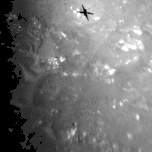
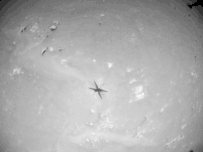
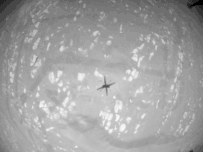
.gif)
.gif)
.gif)
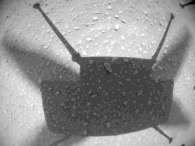

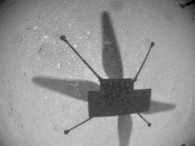
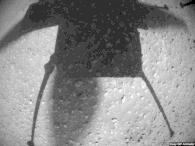
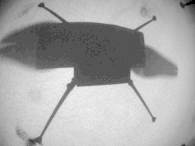
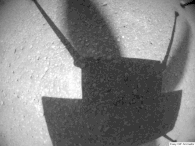
.gif)
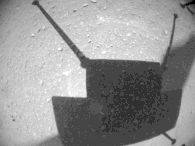

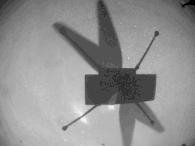
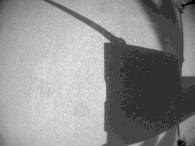
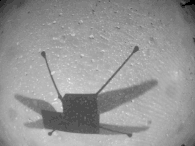




.jpg.webp)





_besides_the_flight_zone_of_Ingenuity_helicopter.png.webp)


























































.gif)
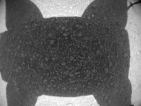










.jpg.webp)

.jpg.webp)
.jpg.webp)
